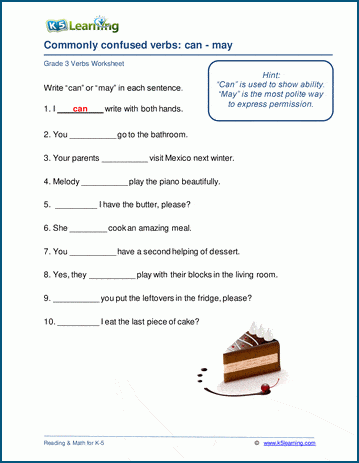To avoid confusing these word pairs takes practice. In our grade 2 and grade 3 grammar sections we have worksheets for students to work on commonly confused word pairs. For example, “lie” and “lay”.
The difference between “lie” and “lay”
To lie means to recline, be in a resting position.
To lay means to put down or place something in position.
For example:
I’m tired and want to lie down for a nap.
Janet lays her book down.
Conjugating “lie” and “lay”
When conjugating these verbs, students are confused further. In part this is because the verb forms are similar.

A glance at the table above shows that the simple past tense of “lie” (lay) is the same as the base form of the different verb “lay”. The two verbs are also similar in that “lie” has a y like “Lay” when it ends in -ing (lying).
For example:
Jennifer is laying her jacket on the table.
The meaning of “laying” is to put down. Therefore, the suitable verb is lay in the present tense: laying.
Grade 3 confusing verbs worksheets
We have a selection of worksheets to review the use of can and may, raise, rise and rose, and will and would.


